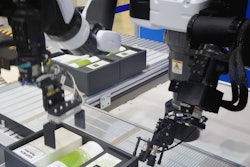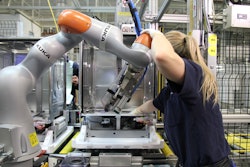
Manufacturing plants generate mountains of data throughout the day, every day. Traditionally, data has been noted on paper or analyzed in spreadsheets. However, today it can be collected automatically via sensors and analyzed with tools that far exceed spreadsheets’ capabilities. ABI Research forecasts that in 2026, manufacturers and industrial firms will be spending on US$19.8 billion on data management, data analytics, and associated professional services.
“For many manufacturers, there is an appreciation that operational decisions need to be based on empirical evidence rather than guesswork. The challenges are not necessarily capturing and analyzing data, rather what to analyze in the first place,” explains Michael Larner, Principal Analyst at ABI Research. “The findings need to have a meaningful impact on operations and so manufacturers need to take a step back and devise precise objectives.”
Manufacturers should engage suppliers to help them prioritize activities and shape projects. For example, is the priority to increase production, reduce waste, improve quality, or to fully understand whether a piece of machinery needs to be serviced? Predictive maintenance is critical for avoiding downtime and improving safety on the factory floor. At the same time, video inspection software captures defects with a greater degree of accuracy than the human eye.
As the use cases expand, the supplier ecosystem evolves to meet them. For example, Bright Wolf, InVMA, and Dploy Solutions marry technological and consulting expertise to help their respective clients appreciate digital transformation from a business perspective. Davra looks to ensure manufacturers are using clean data, Relimetrics focuses on video inspections, Altair on analytics capabilities to support digital twins, and Senseye on predictive maintenance.
The advancements in Artificial Intelligence (AI) and machine learning mean that suppliers’ cannot just report data but also predict outcomes and suggest recommended actions. The orientation for action makes for compelling propositions, and when combined with data visualization platforms embed data in many different roles. The advent of no code/low code platforms allows staff not have to be data scientists to utilize analytics in their roles.
“While manufacturers have spent decades refining their physical production lines, today they need to expend effort in optimizing their processes for collecting and analyzing data. But data should not be collected just for the sake of it,” Larner concludes.
These findings are from ABI Research’s Data Management in Industrial Applications application analysis report. This report is part of the company’s Industrial and Manufacturing research service, which includes research, data, and ABI Insights. Based on extensive primary interviews, Application Analysis reports present in-depth analysis on key market trends and factors for a specific application, which could focus on an individual market or geography.


















